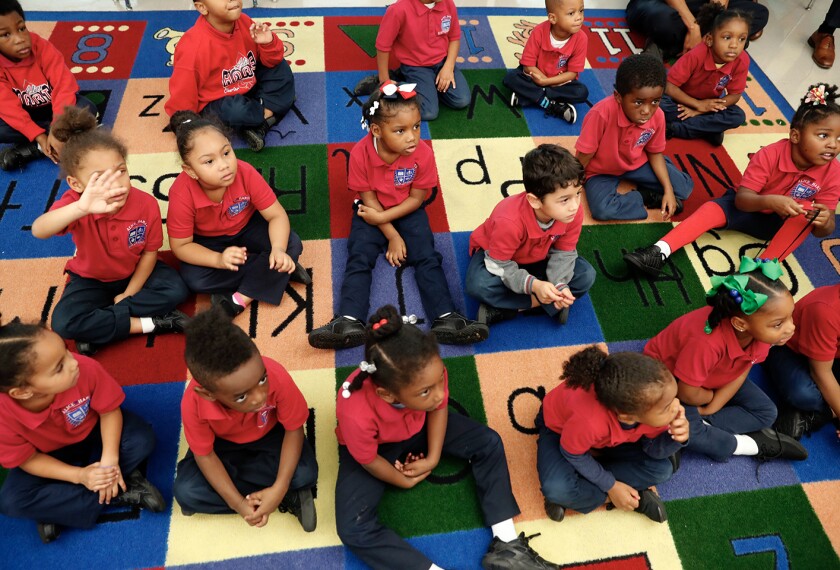While their mothers are working, children under 5 are spending less time being cared for by either a parent or another relative, according to the latest data on child care from the U.S. Census Bureau.
Released last week, the report shows that in 1985, about 48 percent of preschoolers were primarily cared for by the mother herself, the father, or perhaps a grandparent. But by 1995—the most recent year covered by the report— the rate had fallen to about 43 percent.
The trend reflects the increase in employment by mothers of young children and illustrates the significant role that child care plays in the lives of more than 10 million children in the United States.
For More Information |
| The report, “Who’s Minding the Kids? Child Care Arrangements: Fall 1995,” is available from the U.S. Census Bureau. (Requires Adobe’s Acrobat Reader.) |
Close to half of all preschool-age children in 1995—including those whose mothers didn’t work— were in more than one child-care arrangement during the week, with an average of two arrangements per child. For parents who used a combination of providers while they were either working or in school, care in an organized facility—such as a child-care center—along with care by someone else not related to the family was the most common combination.
Unlike the bureau’s past child-care reports, the newest one includes information on child-care arrangements for all children, not just those whose mothers are working. And it finds that grandparents are a primary source of child care for many families. Thirty percent of the 19.3 million preschoolers in 1995 were regularly cared for by a grandparent.
The report also says that about 17 percent of young children were cared for primarily by their fathers in 1995. That rate was up slightly from 1990, when it stood at 16.5 percent, but below the 20 percent logged in 1991—the highest figure since the bureau began collecting such data in 1985 and one that the authors said was most likely due to that year’s poor economic situation.
For the first time, the bureau included information on children enrolled in the federal Head Start program for low-income children. The researchers found that in 1995, 710,000 children under age 6 were enrolled in Head Start, which the authors called “an important source of child care or school readiness for many poor families.”
Children enrolled in Head Start spent an average of 26 hours a week in the program, meaning that many working parents also had to find other providers to cover all the hours they needed child care.
Self-Care Is Common
The bureau’s Survey of Income and Program Participation, on which the new report is based, also provides in-depth information on the child-care arrangements of school-age children.
The survey showed that 6.9 percent of children ages 5 to 14—or 18 percent of the 38.2 million children in that age group—were caring for themselves on a regular basis in 1995. Nearly two-thirds of those unsupervised children were in middle school.
Those numbers are comparable to the statistics in a recent report by the Urban Institute, which found that roughly 4 million 6- to 12-year-olds were routinely left without supervision for some time while their parents were working.
School-age children were in even more child-care arrangements during the week than younger children, the Census Bureau report shows. Children whose parents were employed spent time in an average of 3.4 child-care arrangements, with school being one of those places.
For all children under age 15, the new report shows that the cost of care climbed during the period examined. In constant 1995 dollars, the weekly cost of care increased from an average of $59 in 1985 to $85 in 1995.
The proportion of their income that parents spent on child care increased slightly from 6 percent in 1986 to 7 percent in 1995.
Families in poverty, though, spent five times as much of their budgets on child-care expenses, or 35 percent.
“That is extraordinary,” said Helen Blank, the director of the child-care and -development division of the Children’s Defense Fund, a Washington-based advocacy group.
Previous reports found that families living below the poverty level spent roughly a quarter of their income on child care.
While the new Census Bureau data preceded the 1996 federal welfare-reform law, which requires most mothers receiving public assistance to work, experts in the field say the overall patterns of child-care use among the population at large probably haven’t changed much as a result of the law.




